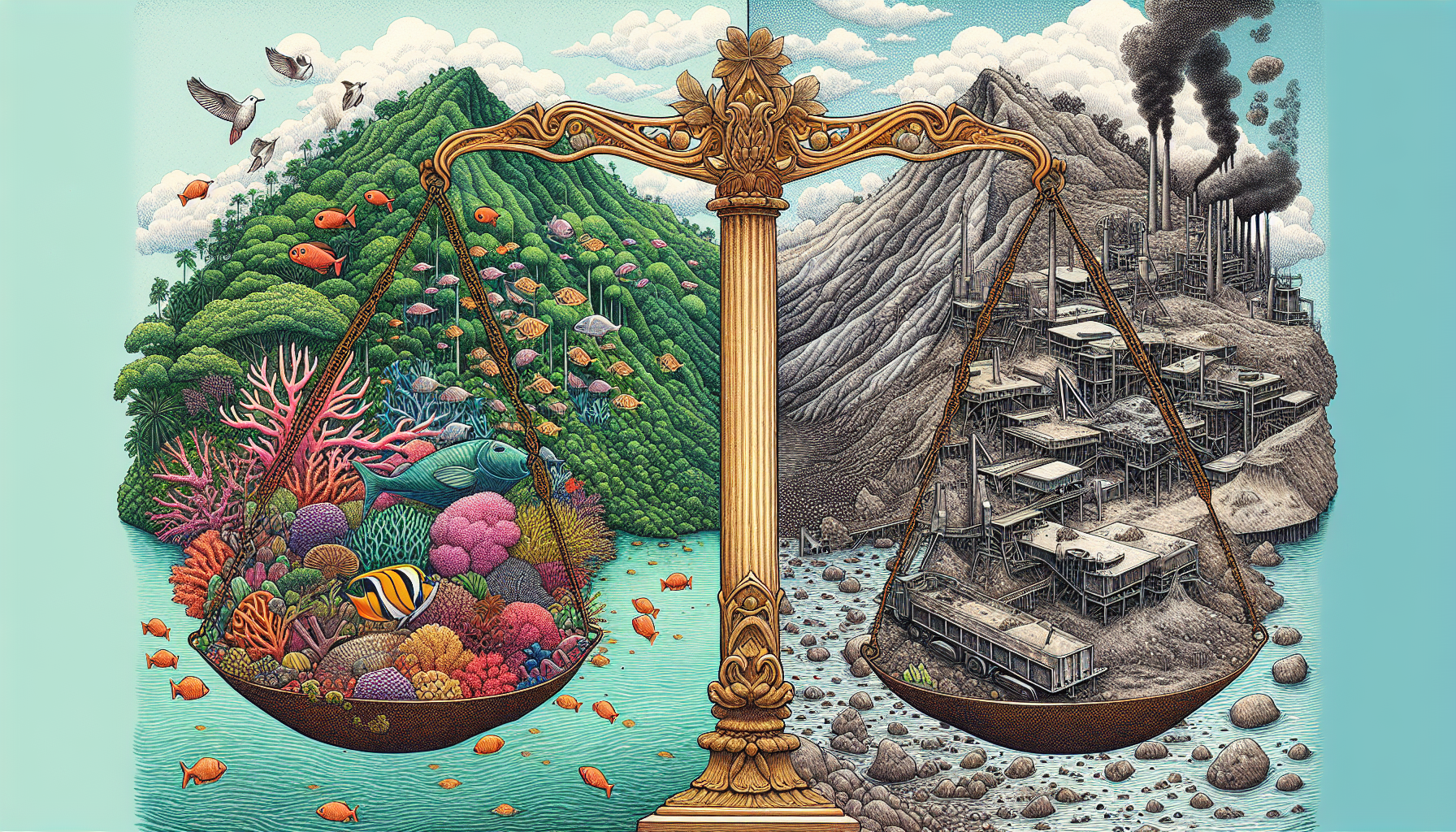Title: Mining’s Heavy Toll: The Price of Progress in Raja Ampat’s Paradisiacal Waters
Dear Readers,
In the heart of Indonesia, amidst the swirling blue-green tapestry of the Raja Ampat archipelago, a quiet struggle is unfolding. It’s not a battle with towering waves or encroaching tides, but with the inexorable hands of industrial progress reaching into one of the world’s most biodiverse marine habitats. Here, nature’s grandeur meets humanity’s appetite for advancement, revealing a stark truth: our quest for sustainable energy might exact an unsustainable price.
Welcome to Raja Ampat, dubbed the "Amazon of the Seas." This cluster of small islands in Southwest Papua Province is celebrated not only for its breathtaking beauty but also for its unparalleled marine biodiversity. Yet beneath the shimmering turquoise waters and sun-dappled trees, an urgent narrative is emerging—a story written in sediment and scarred landscapes.
The Unseen Cost of Electrification
Nickel—a common ingredient in the batteries powering our electric vehicles and an essential metal in stainless steel—has propelled Raja Ampat onto the global stage. The demand has seen dramatic surges in mining activities, devastating this serene paradise. Global Witness, an environmental watchdog, has pulled back the curtain on the extent of this disruption. Their stark aerial images show forests stripped bare, with brown earth replacing vibrant green canopies, and murky waters betraying their once-crystalline clarity.
As Global Witness reveals, and the drone footage corroborates, mining activities have expanded by 500 hectares from 2020 to 2024—an area equivalent to about 700 football fields. This represents not only a physical but also an ecological transformation that threatens to rewrite the fortunes of marine ecosystems brimming with life.
A Partial Victory for Preservation
In a gesture hailed by many conservationists, the Indonesian government recently rescinded permits for four of the five mining companies operating in this region. Yet, while campaigners like the ever-enthusiastic Dr. Mark Erdmann celebrate this as a victory for marine biodiversity, there’s a lingering fear that legal battles might soon resurrect the specter of mining activities.
Dr. Erdmann, who has dedicated over two decades to the conservation of Raja Ampat’s underwater wonders, lauds this decision as a response to the Indonesian populace’s clamor for preservation. "This is the global epicenter of marine biodiversity," he reminds us, underscoring the significance of what’s at stake.
But the cessation of some mining operations is not the end of the tale. On Gag Island, rich in nickel deposits, mining persists, under governmental promises to “restore the ecological impacts.” What kind of restoration can replenish coral reefs and revive denuded forests remains a question fraught with complexities.
The Dynamics of Demand and Damage
A profound paradox lies at the heart of this issue—the very elements that power our shift toward green energy sources are inflicting green scars across the planet. This catch-22 underscores the ongoing struggle to balance economic progress with ecological preservation. Indonesia holds more than half of the world’s nickel production, establishing itself as a linchpin in the global market. Yet, as Dr. Michaela Guo Ying Lo’s research highlights, the local implications include not just environmental degradation but also nuanced socio-economic shifts.
While mining activity momentarily reduces poverty levels, it concurrently exacerbates environmental harm, amplifying pollution and degrading natural resources essential to local well-being.
Navigating Toward a Sustainable Horizon
The Raja Ampat dilemma challenges us to consider the ethics of our global priorities. Even the solutions to climate change, designed to safeguard our future, intimate new forms of harm. As environmental advocate Imam Shofwan critiques, "They say nickel is a solution to the climate crisis. But it's causing deforestation and destroying farmland."
In our pursuit of electrification and reduction of carbon footprints, it is imperative to ask: How can we advance without leaving irreversible footprints upon the natural world? And indeed, what is the acceptable damage, if such a term could ever genuinely apply?
Change begins from within, from our choices, and from holding industries accountable while supporting those affected by these industrial incursions. It is about crafting sustainable futures without mortgaging our natural heritage.
Until the next reflection on the planet’s pulse—
Yours in shared stewardship,
A Chronicler of Change and Challenge

